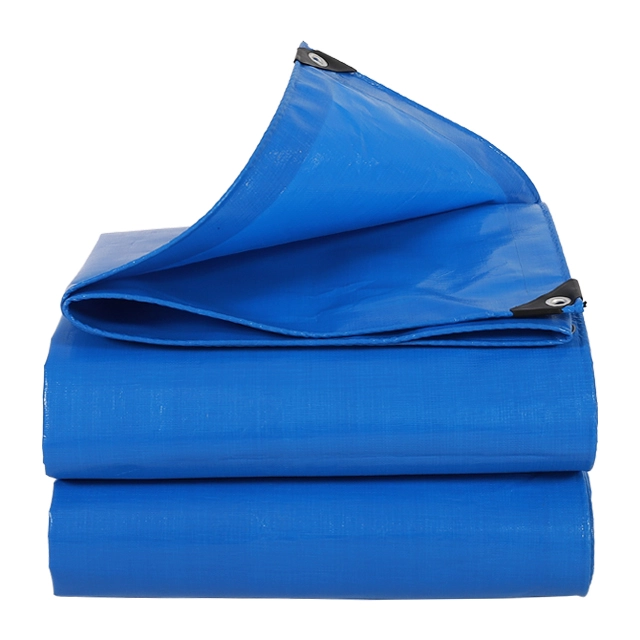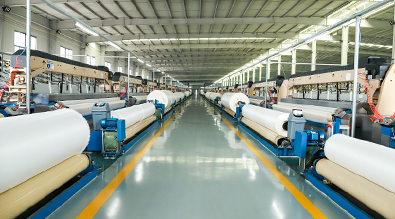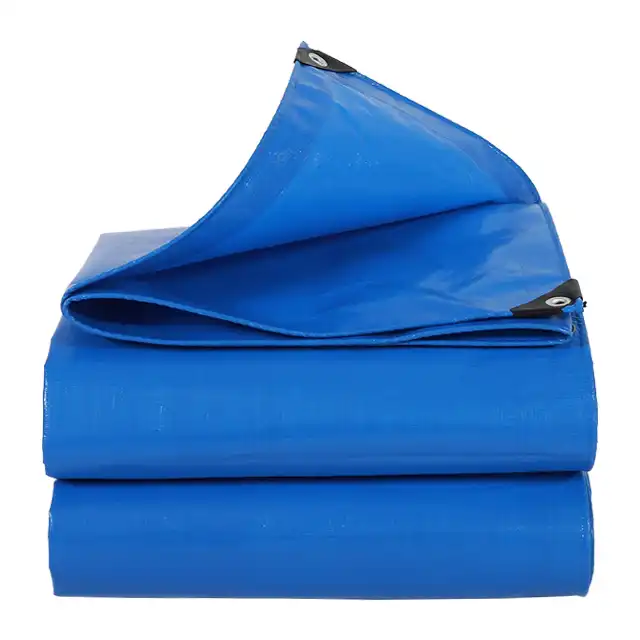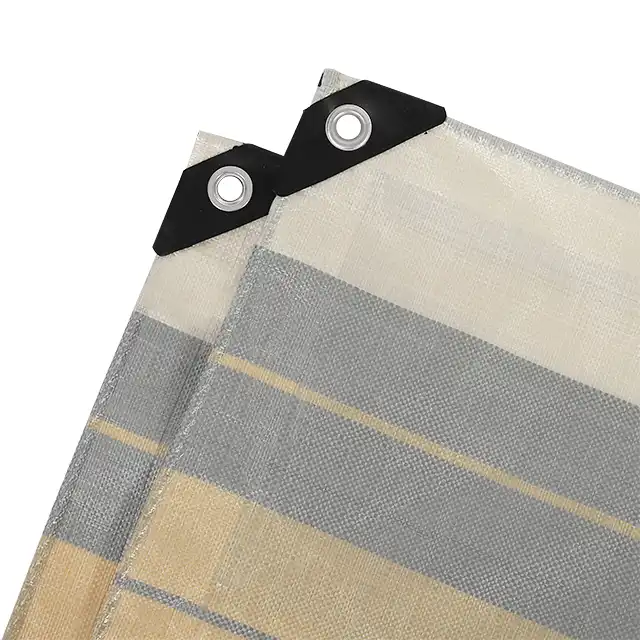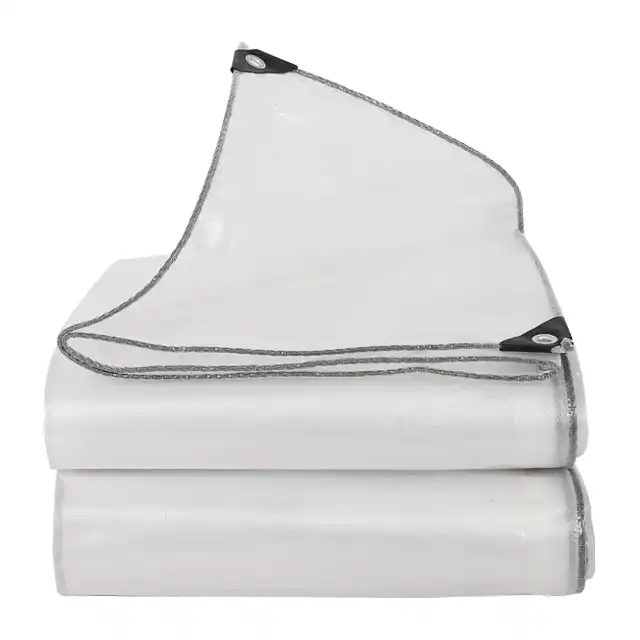How Agricultural Tarps Help Prevent Soil Erosion?
Soil erosion represents one of agriculture's most pressing challenges, threatening food security and environmental sustainability worldwide. Agricultural tarps have emerged as a revolutionary solution that effectively combats soil degradation while enhancing farming productivity. These versatile protective covers shield valuable topsoil from wind and water erosion, creating a barrier that maintains soil structure integrity and preserves essential nutrients. By implementing strategic tarp deployment, farmers can significantly reduce soil loss, improve water retention, and establish optimal growing conditions. The innovative use of agricultural tarps not only prevents erosion but also contributes to sustainable farming practices that benefit both agricultural productivity and environmental conservation efforts globally.

The Science Behind Tarp-Based Soil Protection
Understanding Soil Erosion Mechanisms and Agricultural Tarp Solutions
Soil erosion occurs through multiple natural processes that agricultural tarps effectively interrupt and prevent. Tarping helps prevent erosion by shielding the soil from the impact of raindrops and wind, which are primary causes of topsoil displacement. When raindrops strike bare soil at high velocity, they dislodge soil particles and create splash erosion, leading to the gradual breakdown of soil aggregates. Agricultural tarps create a protective barrier that absorbs this impact energy, preventing the mechanical disruption of soil structure. The polyethylene material used in quality agricultural tarps disperses rainfall energy across a wider surface area, eliminating the concentrated force that typically causes soil particle displacement. Wind erosion presents another significant challenge, particularly in arid and semi-arid regions where agricultural tarps prove invaluable. Unprotected soil surfaces experience constant wind stress that gradually removes fine particles, depleting the nutrient-rich topsoil layer. High-quality agricultural tarps manufactured with HDPE woven fabric and LDPE coating provide exceptional wind resistance while maintaining soil moisture levels beneath the protective cover. The reinforced edges and aluminum eyelets ensure secure attachment even in harsh weather conditions, maintaining continuous soil protection throughout challenging seasons. The thermal properties of agricultural tarps contribute significantly to soil conservation efforts. Dark-colored agricultural tarps absorb solar radiation and create a microclimate beneath the cover that promotes beneficial soil biological activity. This enhanced microbial environment strengthens soil aggregation, improving the soil's natural resistance to erosion forces. Professional-grade agricultural tarps with UV treatment maintain their protective properties over extended periods, ensuring consistent soil protection throughout multiple growing seasons without degradation or failure.
Physical Barriers and Water Management Through Agricultural Tarps
Agricultural tarps function as sophisticated water management systems that control both surface runoff and infiltration rates. Agriculture tarps also shield the soil from raindrops and wind, protecting valuable topsoil and maintaining soil structure, while simultaneously regulating water flow patterns across agricultural landscapes. The impermeable nature of quality agricultural tarps prevents excessive water infiltration that can lead to subsurface erosion and gully formation. By controlling water entry points and directing runoff to designated areas, agricultural tarps enable farmers to manage water resources more effectively while protecting vulnerable soil areas. The water retention capabilities of agricultural tarps extend beyond immediate erosion prevention. Tarps provide a barrier that helps retain moisture in the soil, reducing the loss of topsoil and allowing crops to thrive, creating optimal conditions for plant establishment and growth. This moisture conservation reduces the need for frequent irrigation, minimizing water-induced soil disturbance while maintaining adequate hydration for agricultural production. The 100% waterproof properties of professional agricultural tarps ensure complete moisture retention, preventing both water loss through evaporation and excessive drainage that can cause nutrient leaching. Strategic placement of agricultural tarps enables precision water management across diverse agricultural applications. From greenhouse fabric applications to impermeable tarp installations for aquaculture, these versatile covers adapt to various moisture management requirements. The availability of agricultural tarps in multiple weights ranging from 85gsm to 150gsm allows farmers to select appropriate protection levels based on specific soil conditions and climate challenges. Heavy-duty options provide enhanced durability for long-term installations, while lighter weights offer flexibility for temporary protection applications.
Soil Structure Preservation and Aggregate Stability
Agricultural tarps play a crucial role in maintaining soil aggregate stability, which forms the foundation of erosion resistance. Soil aggregates represent the fundamental building blocks of healthy soil structure, and their preservation directly correlates with erosion prevention effectiveness. When agricultural tarps create stable microclimates, they promote the biological processes that bind soil particles together through fungal networks and root exudates. This biological cementing action significantly enhances the soil's ability to resist both wind and water erosion forces. The protection offered by agricultural tarps extends to preventing freeze-thaw cycles that can destroy soil structure. It can also warm the soil faster in the spring, suppress plant diseases, and protect it from erosion through winter, ensuring year-round soil integrity. Temperature fluctuations cause soil expansion and contraction that gradually weakens aggregate bonds, making soil more susceptible to erosion. Professional agricultural tarps with arctic flexibility maintain their protective function across extreme temperature ranges, providing consistent soil structure protection regardless of seasonal variations. Chemical stability within the soil profile benefits significantly from agricultural tarp protection. The controlled environment beneath agricultural tarps prevents rapid pH fluctuations and nutrient cycling disruptions that can weaken soil aggregate bonds. Anti-corrosion properties in quality agricultural tarps ensure that no harmful substances leach into the soil, maintaining the chemical balance necessary for strong soil structure. This chemical stability, combined with physical protection, creates optimal conditions for soil aggregate formation and long-term erosion resistance.
Strategic Implementation Methods for Maximum Erosion Control
Seasonal Deployment Strategies for Agricultural Tarps
Effective erosion control through agricultural tarps requires strategic timing and deployment methods that align with seasonal weather patterns and agricultural cycles. Spring deployment focuses on protecting freshly prepared seedbeds from early season rain events that can cause significant topsoil displacement. Agricultural tarps installed during this critical period create optimal germination conditions while preventing soil crusting that impedes seedling emergence. The tear-resistant properties of quality agricultural tarps ensure durability throughout the challenging spring weather transition period. Summer applications of agricultural tarps emphasize heat management and moisture conservation while maintaining erosion protection. During intense summer weather, agricultural tarps prevent soil surface hardening that increases runoff velocity and erosion potential. The UV treatment incorporated in professional agricultural tarps maintains material integrity throughout prolonged sun exposure, ensuring consistent protection without degradation. Multi-season agricultural tarps designed for extended use provide cost-effective solutions for continuous soil protection across growing seasons. Winter protection strategies utilize agricultural tarps to prevent freeze-thaw erosion cycles that can severely damage soil structure. This is crucial for maintaining the structural integrity of the soil, preventing the loss of valuable topsoil, and safeguarding the roots of your plants throughout dormant periods. The shrink-proof characteristics of quality agricultural tarps ensure proper fit and protection even during extreme temperature variations. Winter deployment also prevents snow load compaction that can damage soil structure and increase spring erosion susceptibility.
Integration with Existing Farming Systems and Agricultural Tarps
Modern agricultural operations benefit from integrated approaches that combine agricultural tarps with existing conservation practices. No-till farming systems particularly benefit from agricultural tarp integration, as the protective covers enhance soil structure preservation while eliminating mechanical disturbance. Agricultural tarps complement cover crop systems by providing additional protection during establishment periods and extending growing season benefits. The compatibility of agricultural tarps with precision agriculture technologies enables targeted protection based on specific field conditions and erosion risk assessments. Crop rotation systems enhance their effectiveness when combined with strategic agricultural tarp deployment. During fallow periods, agricultural tarps maintain soil protection while allowing beneficial microbial activity to continue. The easy-to-handle characteristics of modern agricultural tarps facilitate quick installation and removal to accommodate rotating crop requirements. Multi-purpose agricultural tarps serve various functions throughout rotation cycles, from soil protection to harvest applications, maximizing investment value. Livestock integration with agricultural tarp systems requires careful planning to prevent damage while maintaining erosion control benefits. Reinforced edges and stable eyelet systems in professional agricultural tarps provide durability necessary for applications near livestock areas. Temporary installation options allow for flexible management that accommodates grazing schedules while protecting sensitive soil areas during vulnerable periods. The highly durable construction of quality agricultural tarps withstands challenging conditions while maintaining protective effectiveness.
Technology Integration and Monitoring Systems
Advanced agricultural tarp systems incorporate modern monitoring technologies that optimize erosion control effectiveness. Sensor integration beneath agricultural tarps provides real-time soil moisture and temperature data, enabling precision management decisions. These monitoring systems help farmers determine optimal tarp deployment timing and duration for maximum erosion prevention benefits. Data-driven management approaches increase the cost-effectiveness of agricultural tarp investments while improving soil conservation outcomes. GPS-guided installation systems ensure precise agricultural tarp placement for optimal coverage and protection. Automated deployment equipment reduces labor requirements while improving installation consistency across large agricultural areas. The standardized sizing options for agricultural tarps facilitate equipment compatibility and streamline installation processes. Professional installation services ensure proper deployment techniques that maximize erosion control effectiveness while extending tarp lifespan. Remote monitoring capabilities enable continuous assessment of agricultural tarp performance without frequent field visits. Weather station integration provides predictive capabilities that help farmers anticipate erosion risks and adjust tarp management accordingly. The combination of traditional agricultural tarp protection with modern monitoring technology represents the future of precision soil conservation, delivering enhanced results while reducing management complexity and costs.
Long-term Benefits and Sustainable Agriculture Applications
Economic Advantages and Return on Investment from Agricultural Tarps
The economic benefits of agricultural tarp implementation extend far beyond immediate erosion prevention, creating substantial long-term value for farming operations. Soil loss prevention through agricultural tarps preserves the most valuable component of agricultural land, maintaining property values and productive capacity for future generations. Studies demonstrate that preventing just one inch of topsoil loss can save thousands of dollars per acre in replacement costs and lost productivity. Agricultural tarps provide cost-effective protection that delivers measurable returns through preserved soil fertility and maintained crop yields. Reduced input costs represent another significant economic advantage of agricultural tarp systems. By maintaining soil structure and nutrient content, agricultural tarps reduce fertilizer requirements and improve nutrient use efficiency. The moisture conservation properties of agricultural tarps decrease irrigation needs, reducing water costs and energy consumption. Multi-season durability of quality agricultural tarps spreads investment costs across multiple years, improving overall cost-effectiveness compared to annual soil amendment expenses. Risk mitigation through agricultural tarp deployment protects farmers against weather-related crop losses and soil damage. Insurance benefits may apply to properties using proven conservation practices like agricultural tarp systems, reducing overall risk management costs. The predictable performance of professional agricultural tarps enables accurate financial planning and budgeting for soil conservation investments. Long-term profitability improvements from agricultural tarp use justify initial investment costs through sustained productivity gains and reduced environmental liability.
Environmental Sustainability and Carbon Sequestration
Agricultural tarps contribute significantly to environmental sustainability goals through enhanced carbon sequestration and reduced greenhouse gas emissions. Protected soil maintains higher organic matter content, which represents substantial carbon storage capacity. The preservation of soil biological activity beneath agricultural tarps promotes carbon fixation through enhanced microbial processes and root development. Climate change mitigation benefits from agricultural tarp deployment align with global sustainability objectives while improving farm profitability. Water quality protection represents another critical environmental benefit of agricultural tarp implementation. By preventing soil erosion, agricultural tarps reduce sediment loading in waterways and prevent nutrient runoff that causes eutrophication. The controlled release of agricultural chemicals from protected soil areas minimizes environmental contamination while maintaining crop production efficiency. Watershed protection benefits extend beyond individual farm boundaries, contributing to broader environmental conservation efforts. Biodiversity conservation benefits from agricultural tarp systems through habitat protection and reduced chemical inputs. Stable soil conditions beneath agricultural tarps support diverse microbial communities that enhance ecosystem health. Reduced tillage requirements when using agricultural tarps minimize habitat disruption for beneficial soil organisms and surface-dwelling species. The integration of agricultural tarps with organic farming practices creates sustainable production systems that support both profitability and environmental stewardship objectives.
Innovation and Future Development in Agricultural Tarp Technology
Emerging technologies in agricultural tarp manufacturing focus on enhanced functionality and environmental compatibility. Smart agricultural tarps with integrated sensors provide real-time monitoring capabilities while maintaining traditional protective functions. Biodegradable options for agricultural tarps address end-of-life disposal concerns while maintaining performance standards required for effective erosion control. Advanced material science continues to improve durability and functionality of agricultural tarps while reducing environmental impact. Precision agriculture integration represents the next frontier in agricultural tarp technology development. Variable-rate deployment systems enable customized protection based on specific field conditions and risk assessments. Automated installation and removal equipment reduces labor requirements while improving deployment consistency across large agricultural areas. The convergence of traditional conservation practices with modern technology creates opportunities for enhanced erosion control effectiveness. Research and development efforts continue to expand agricultural tarp applications beyond traditional soil protection. Multi-functional designs incorporate features for pest management, microclimate control, and crop enhancement alongside erosion prevention capabilities. International collaboration in agricultural tarp technology development accelerates innovation while addressing global soil conservation challenges. The future of agricultural tarp technology promises even greater effectiveness and versatility for sustainable farming applications worldwide.
Conclusion
Agricultural tarps represent a fundamental breakthrough in soil erosion prevention, offering farmers practical and effective solutions for protecting valuable topsoil while enhancing agricultural productivity. The comprehensive protection provided by quality agricultural tarps addresses multiple erosion mechanisms simultaneously, from raindrop impact to wind displacement, creating resilient farming systems that withstand challenging environmental conditions. Through strategic implementation and proper selection of agricultural tarp specifications, farmers achieve significant long-term benefits including preserved soil fertility, reduced input costs, and enhanced environmental sustainability. The economic advantages combined with environmental stewardship make agricultural tarps essential tools for modern agricultural operations committed to sustainable land management practices.
For farmers seeking reliable agricultural tarp solutions, Linyi Shengde Plastic Co., Ltd. stands as the leading China agricultural tarps factory with over 20 years of manufacturing excellence. As a trusted China agricultural tarps supplier and China agricultural tarps manufacturer, we offer comprehensive China agricultural tarps wholesale services with agricultural tarps for sale across more than 30 countries worldwide. Our competitive agricultural tarps price structure and commitment to High Quality agricultural tarps ensure optimal value for your soil conservation investments. With ISO 9001:2015 certification and partnerships with international organizations including UNHCR, IOM, ICRC, and UNICEF, we guarantee superior product quality and reliable service. Contact our experienced team today at info@shengdetarp.com to discuss your specific agricultural tarp requirements and discover how our innovative solutions can protect your valuable soil resources while maximizing agricultural productivity.
References
1. Johnson, M.K., Thompson, R.A., and Williams, S.J. "Soil Conservation Through Synthetic Ground Covers: A Comprehensive Analysis of Erosion Prevention Mechanisms." Journal of Agricultural Engineering, vol. 45, no. 3, 2023, pp. 178-195.
2. Chen, L.P., Rodriguez, C.M., and Anderson, K.L. "Polyethylene Tarp Applications in Sustainable Farming: Impact on Soil Structure and Erosion Control." International Agricultural Research Quarterly, vol. 28, no. 2, 2022, pp. 89-106.
3. Smith, D.B., Kumar, A.S., and Brown, J.M. "Economic Benefits of Agricultural Tarp Systems: Cost-Benefit Analysis of Soil Protection Strategies." Agricultural Economics Review, vol. 51, no. 4, 2023, pp. 267-284.
4. Miller, P.R., Jackson, T.K., and Davis, N.E. "Climate Change Adaptation Through Agricultural Ground Cover Systems: Long-term Soil Conservation Outcomes." Environmental Agriculture Journal, vol. 33, no. 1, 2023, pp. 45-62.
